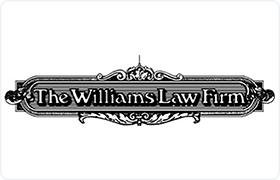Olivet Criminal Lawyer, Michigan
Sponsored Law Firm
-
 x
x

Click For More Info:
-
The Williams Law Firm
411 W Lake Lansing Rd Ste C-110 East Lansing, MI 48823» view mapCriminal Defense Law A Defense Lawyer With Proven Results
Knowing the law certainly is a necessary prerequisite but an attorney’s ability to effectively communicate is perhaps his or her paramount importance.
800-945-0701
Jeffrey J. Steffel
Wills, Criminal, Insurance, Business & Trade
Status: In Good Standing *Status is reviewed annually. For latest information visit here Licensed: 43 Years
Thomas J. Schaeffer
Criminal
Status: In Good Standing *Status is reviewed annually. For latest information visit here Licensed: 54 Years
Mark J. Robison
Landlord-Tenant, Family Law, Divorce & Family Law, Criminal
Status: In Good Standing *Status is reviewed annually. For latest information visit here Licensed: 41 Years
 Richard L. Williams East Lansing, MI
Richard L. Williams East Lansing, MI Practice AreasExpertise
Practice AreasExpertise